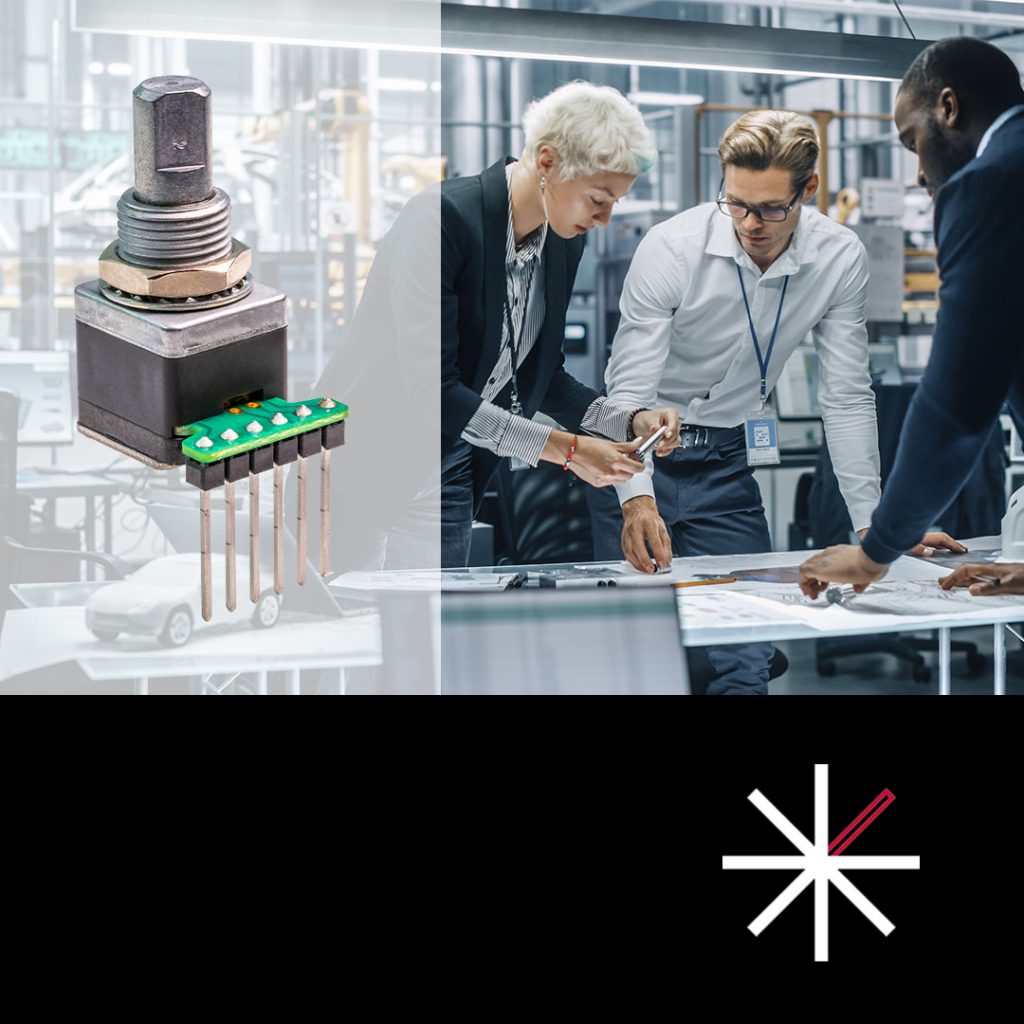
Building the perfect control panel is a balancing act. Every component choice impacts the final product’s performance, durability, and how it feels in the user's hands. When it comes to rotary encoders, designers and engineers often weigh several key factors to find the right fit for their application.
Let’s explore the five most common decisions you’ll face when specifying a rotary encoder for your next design.
1. Which is better for your design: 3.3 V or 5 V?
Matching the encoder’s voltage to your system’s logic levels is fundamental. The long-standing industry standard is 5.0 V, which remains common in many industrial and vehicle systems. However, as technology pushes toward greater efficiency and portability, 3.3 V has become the go-to for modern, low-power systems. For any battery-powered or portable device, the reduced power consumption of a 3.3 V encoder is a critical advantage that can extend operational life.
2. Is a million-cycle encoder worth the investment?
A major decision point is often lifespan. Do you need an optical encoder rated for over a million cycles, or can a mechanical encoder with a 30,000-cycle life meet the product's needs?
Optical encoders, which use a beam of light to detect rotation, have no physical contacts to wear out, giving them exceptional longevity. This makes them ideal for critical applications in healthcare, avionics, or military equipment, where failure is not an option. While they have a higher initial cost, that investment pays off in reliability. For less demanding consumer products, the lower cost of a mechanical encoder might be the more practical choice.
3. Will the end-user expect distinct clicks or smooth rotation?
How the encoder feels to the user can define their perception of your entire product. This comes down to a choice between detents—distinct "clicks" for each position—or a smooth, non-detent rotation. Detents provide crisp, tactile feedback, perfect for navigating menus or selecting specific settings. In contrast, a smooth, fluid rotation is better for fine adjustments, like setting a volume level or dimming a screen. The right haptics can make a product feel rugged, precise, and premium.
4. When does an IP rating really matter?
Does your product need a certified IP (Ingress Protection) rating for sealing against the elements? For a device used in a clean, indoor environment, a seal might be overkill. But for any product exposed to the real world—whether it’s dust on a farm, moisture in a marine environment, or cleaning fluids in a hospital—a sealed design is essential for long-term reliability.
While a sealed component adds to the cost, it’s a small price to pay to prevent a catastrophic failure in the field.
5. In a scroll-and-click world, how important is the pushbutton?
Modern user interfaces are often built around a "scroll-and-click" interaction.
But unlike a tap on a glass screen, a physical pushbutton provides unmistakable, tactile confirmation. That distinct “click” tells an operator the input was received, allowing them to keep their eyes on the task at hand—a critical factor for safety and efficiency in medical, military, and off-highway applications. This ability to build muscle memory for “no-look” operation is something touch interfaces simply can't replicate.
This means the integrated pushbutton on a rotary encoder can see just as much, if not more, use than the rotation itself.

Making the Right Choice for Your Application
Choosing the right rotary encoder involves carefully considering each of these trade-offs. By balancing the need for durability, tactile feel, power efficiency, and environmental sealing with the total cost, you can select a component that not only meets your technical specifications but also delivers a superior experience for the end user.
Want more information on low-power optical encoders? Visit our Premium Haptic Rotary Encoders for OEMs page.
Need help navigating these choices for your next project? Our team of experienced engineers is here to help you find the perfect solution. Contact us today to get started




